The use of rhythm and rhyme Rhythm in

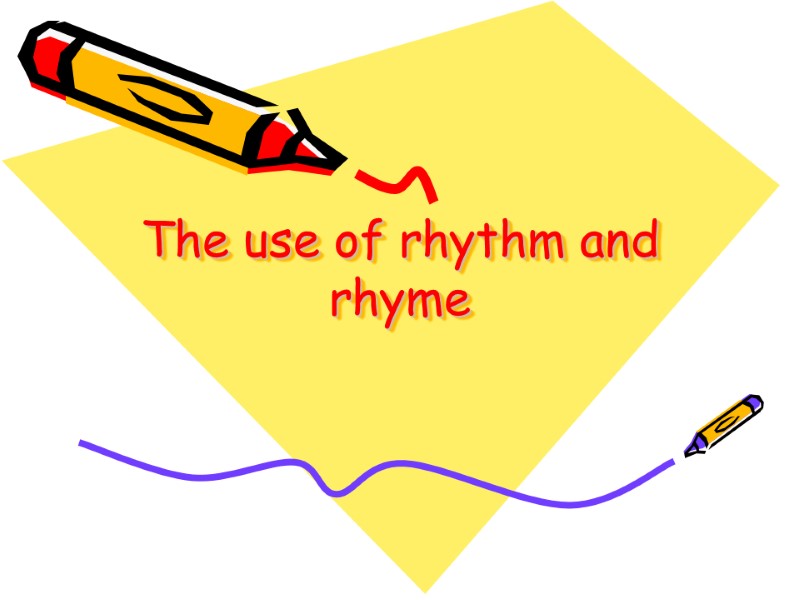
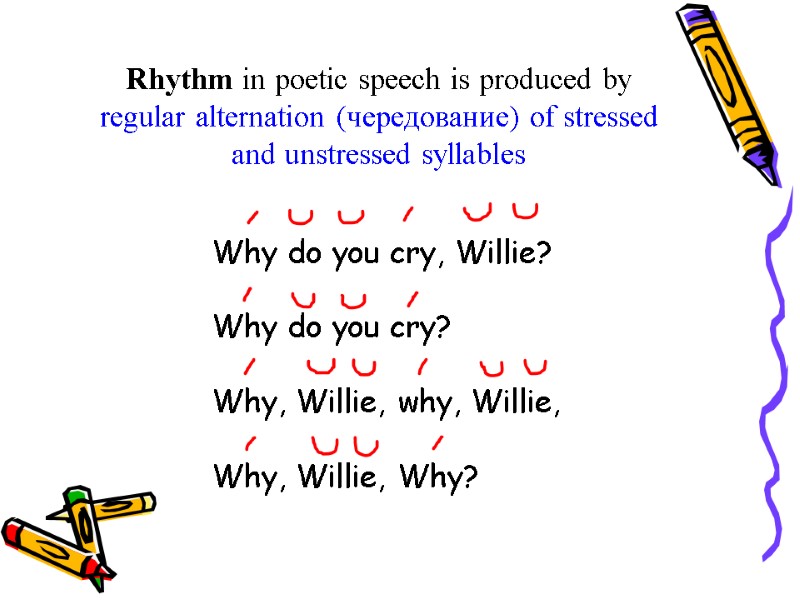
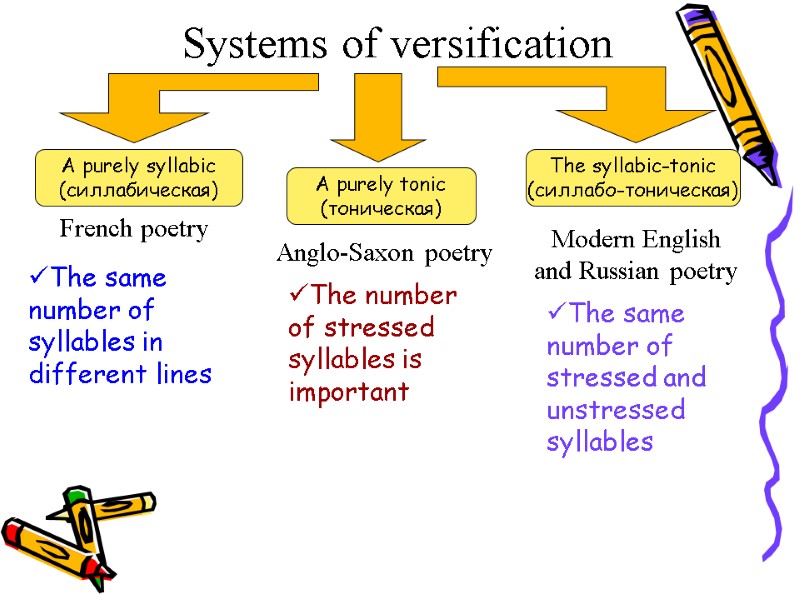

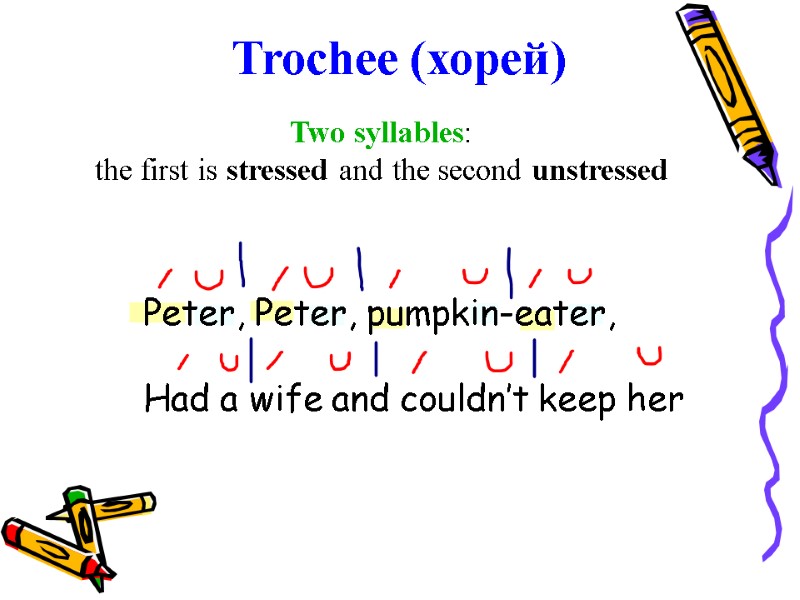
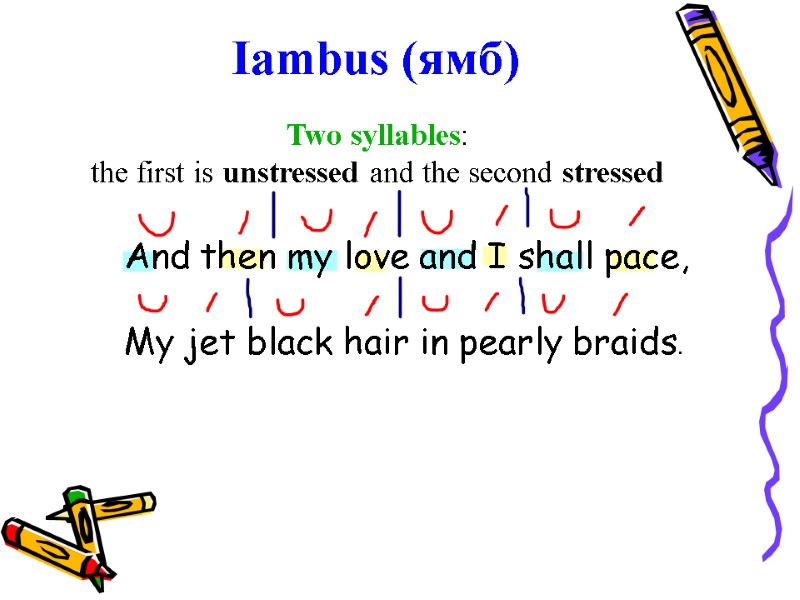
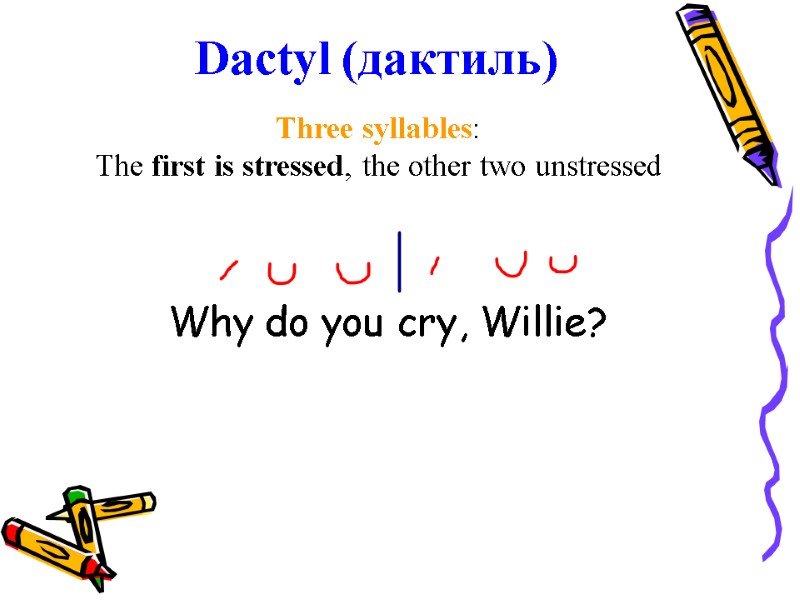
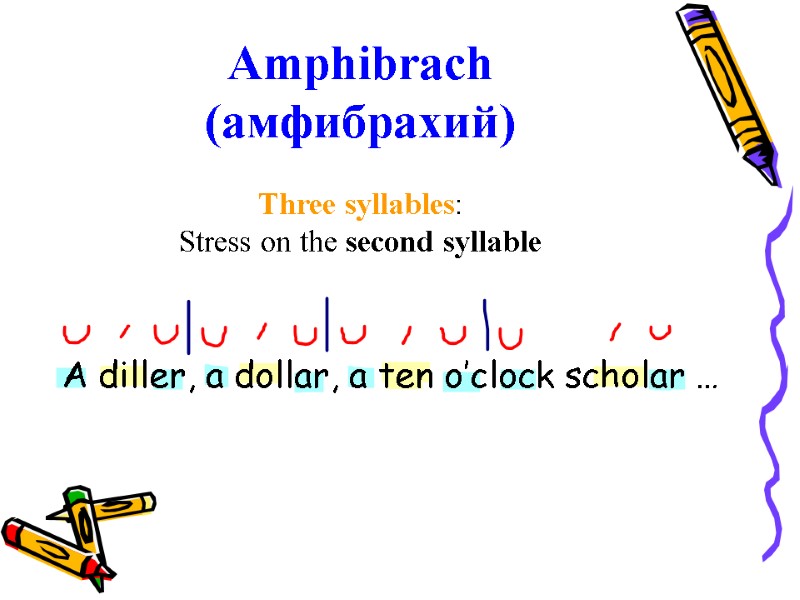
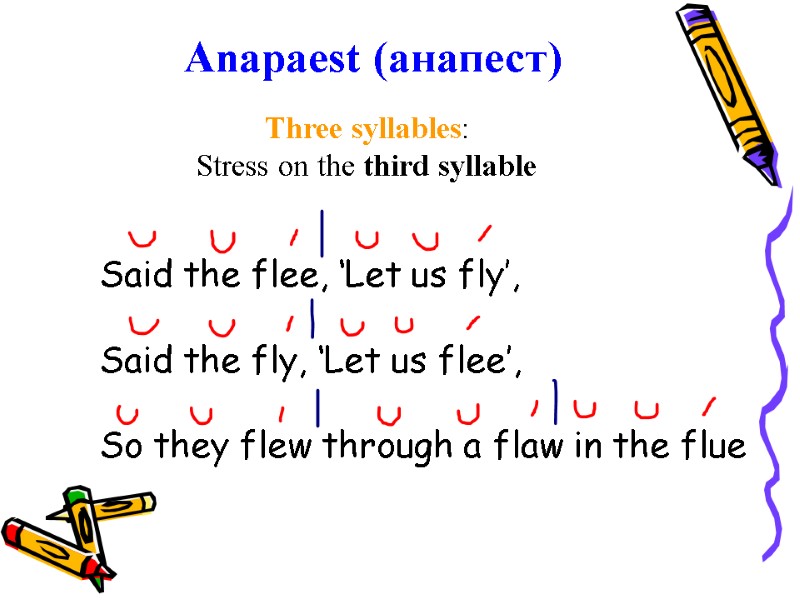
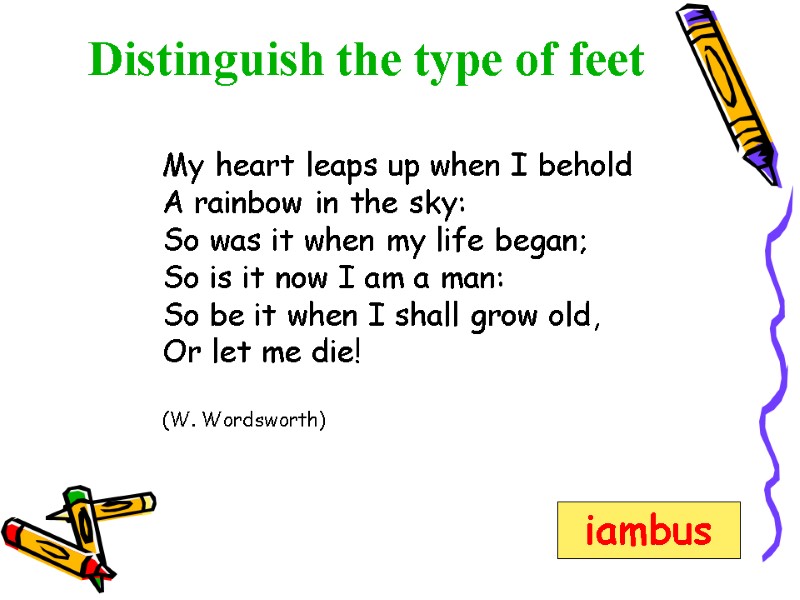
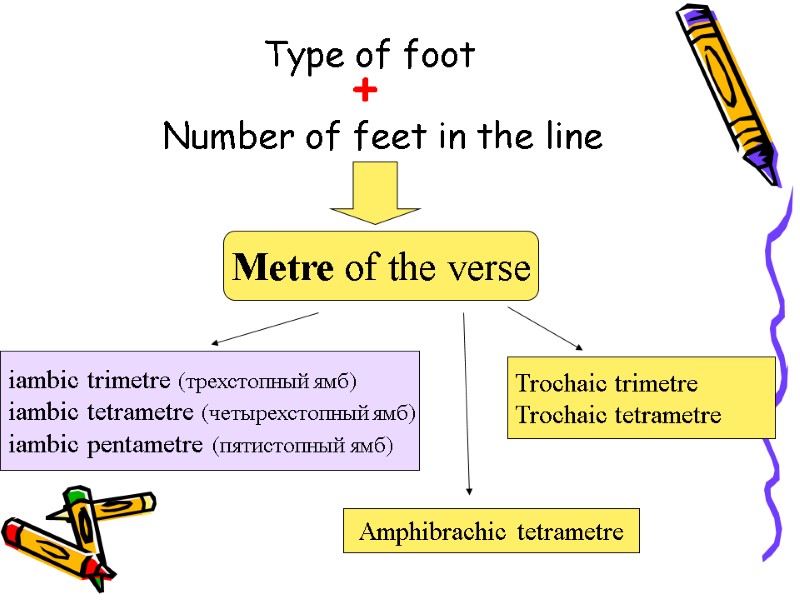
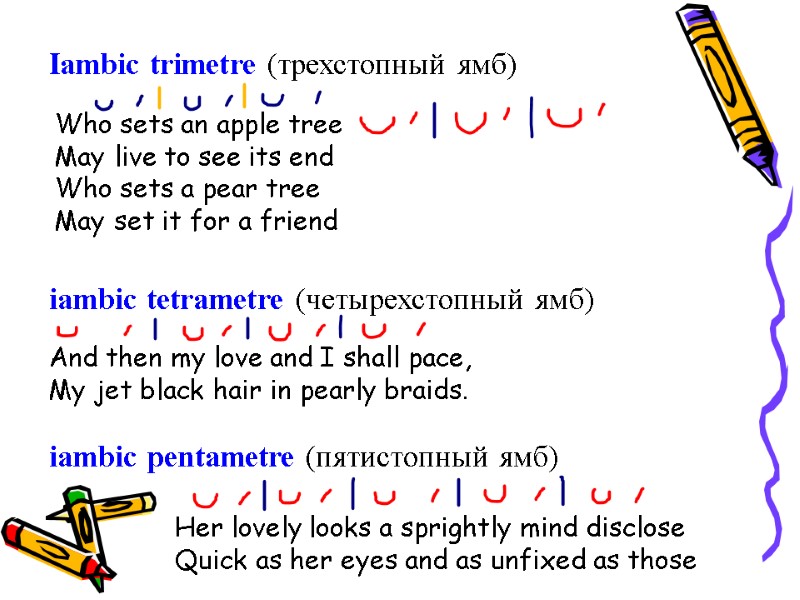
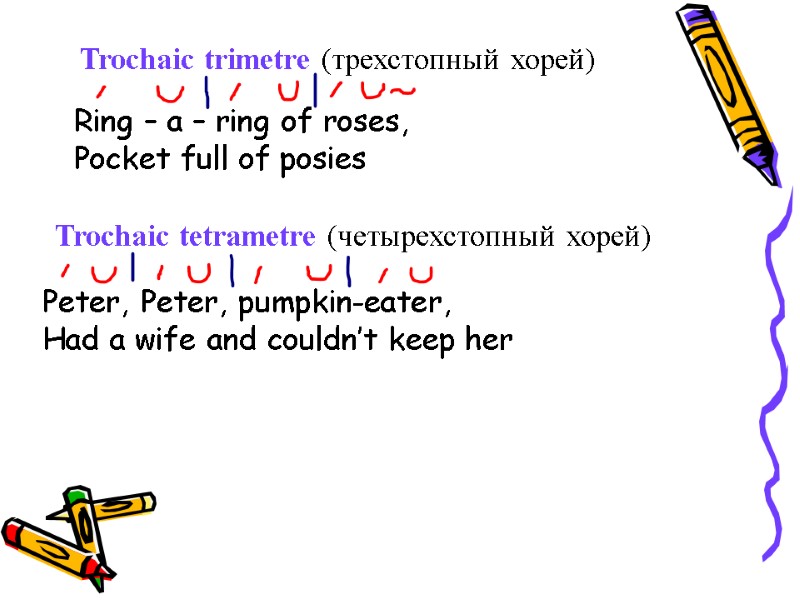
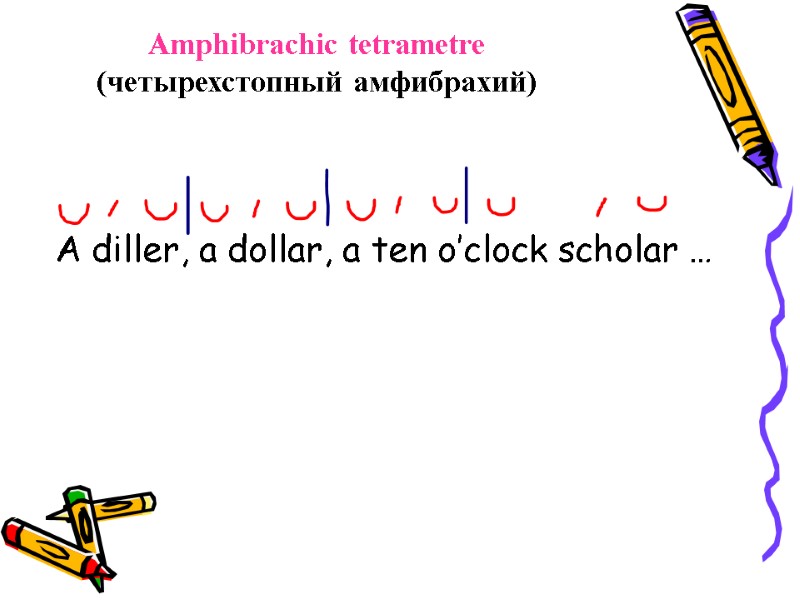
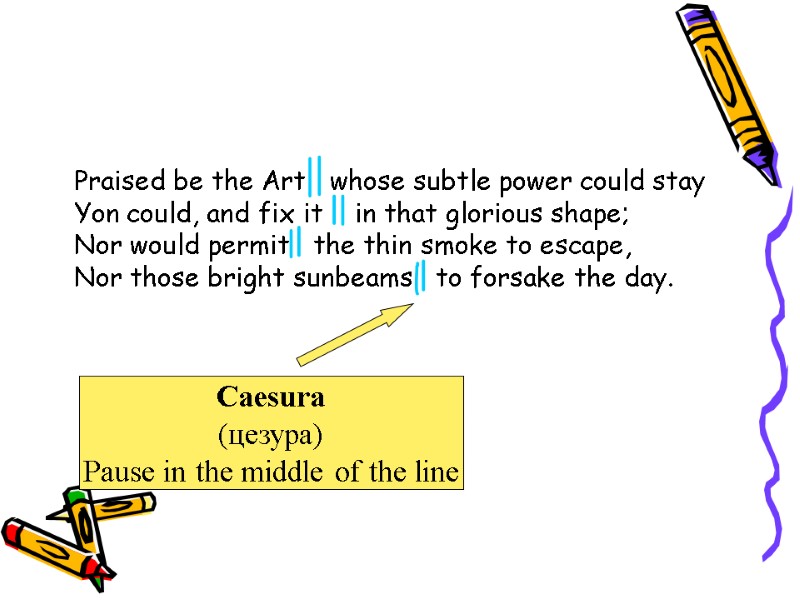
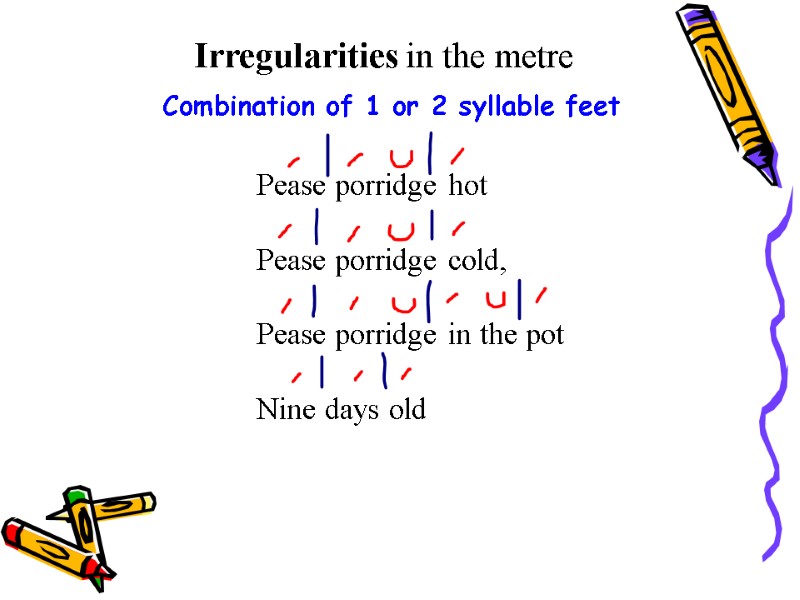
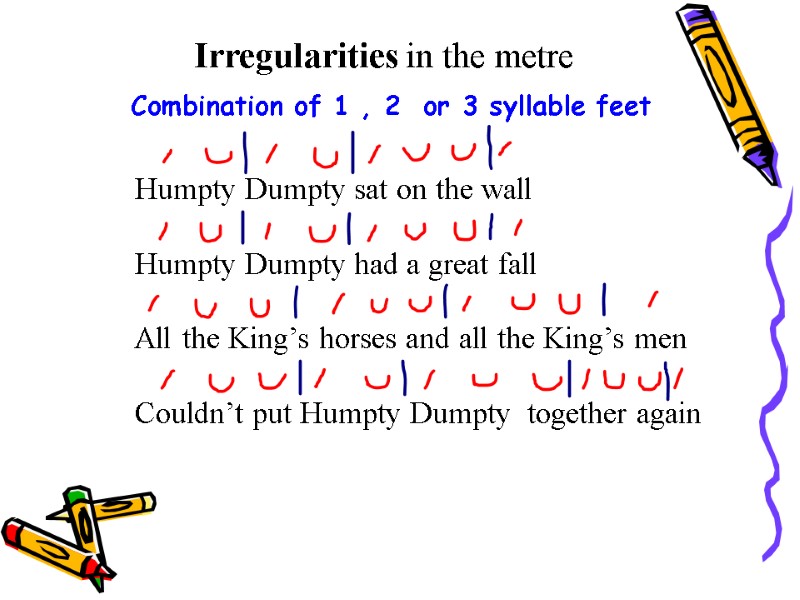
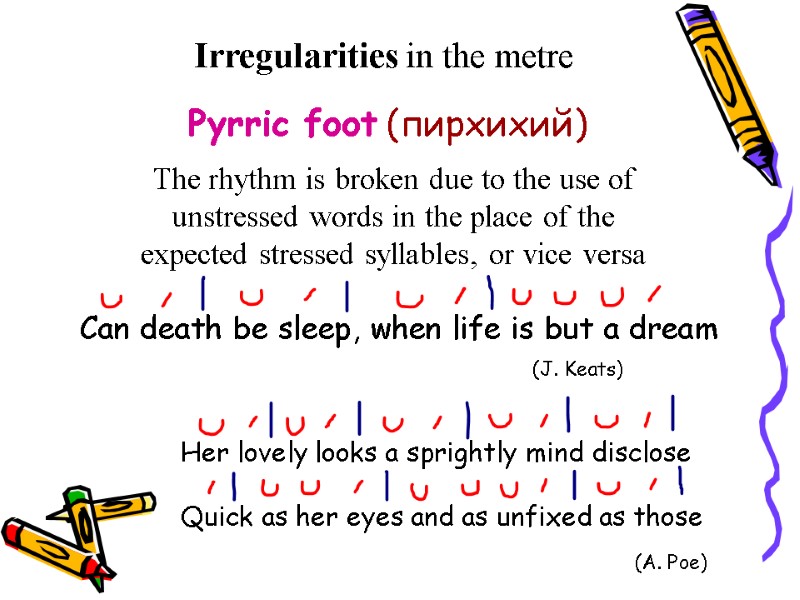
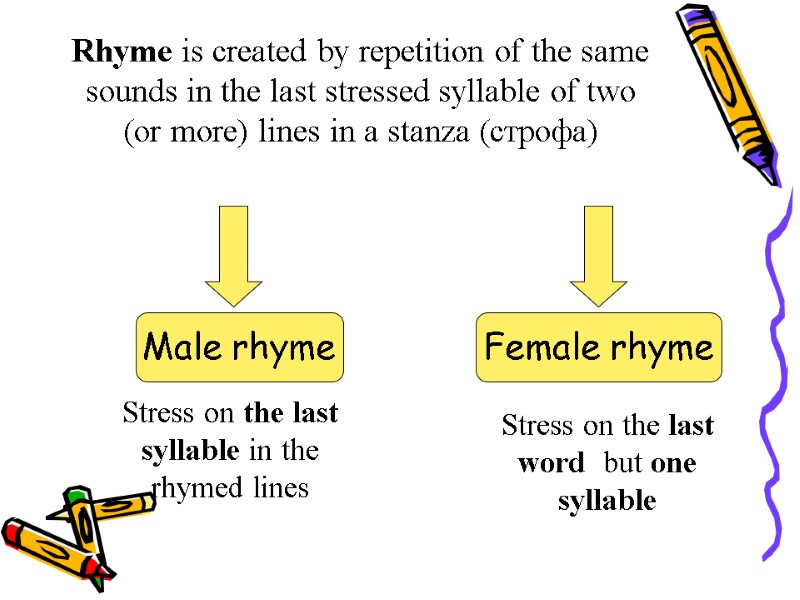
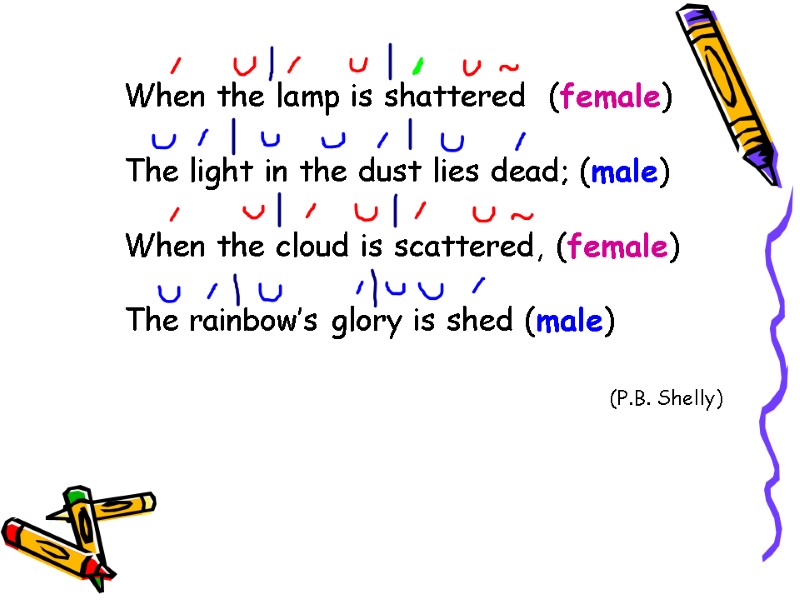
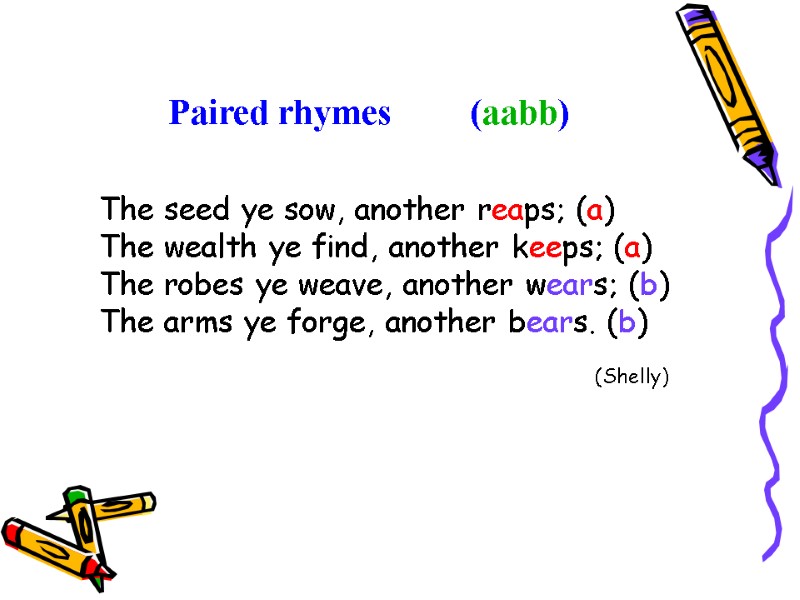

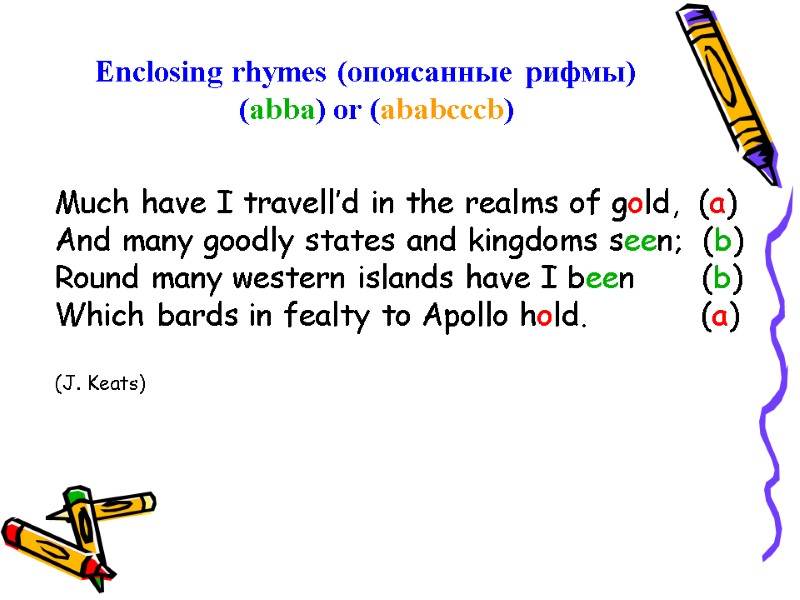
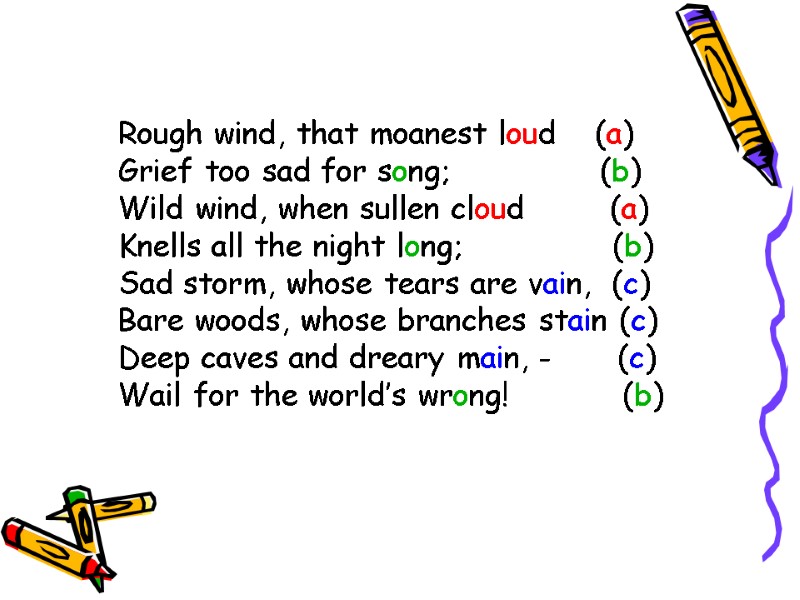
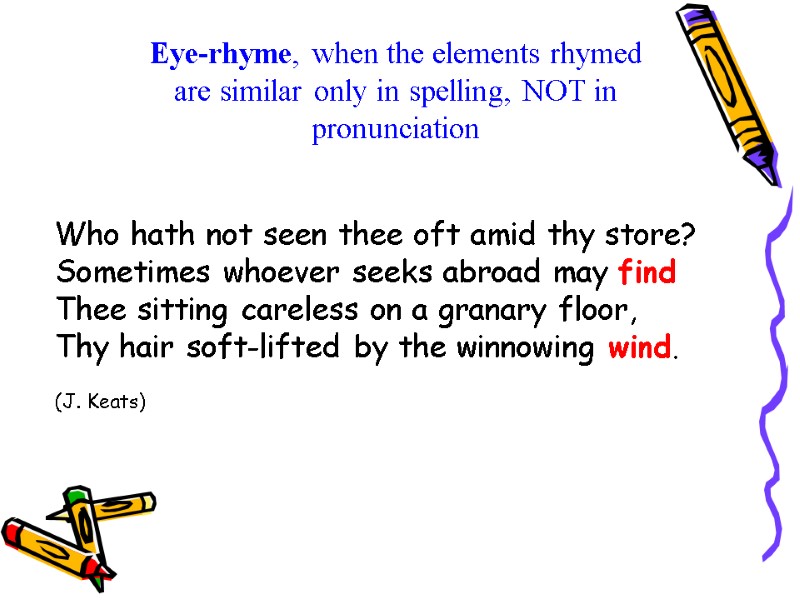
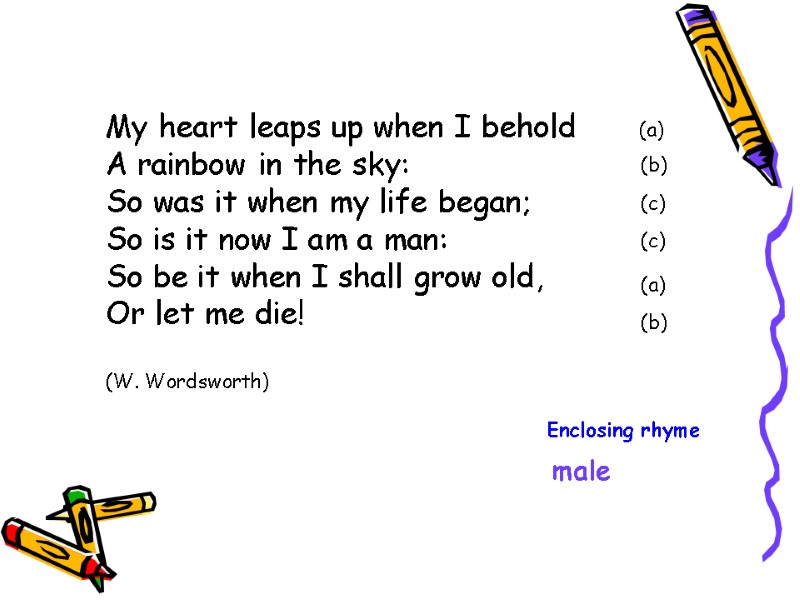
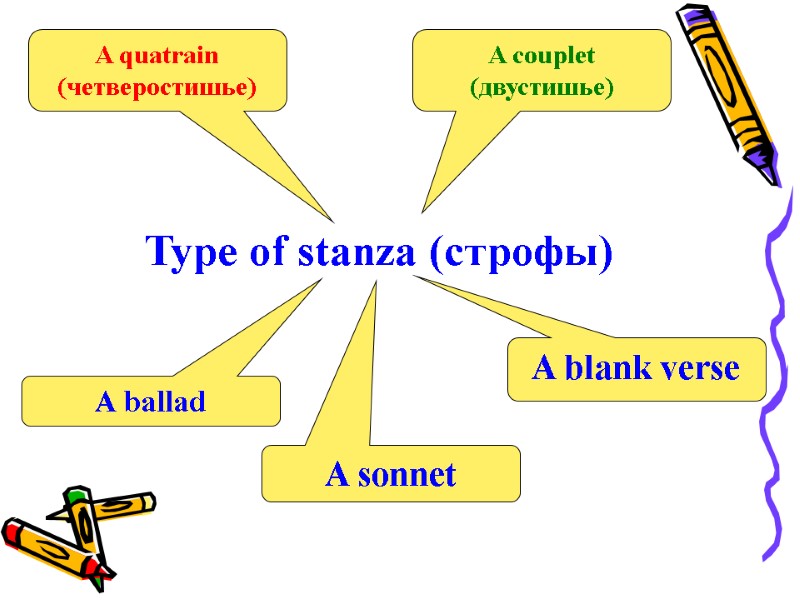
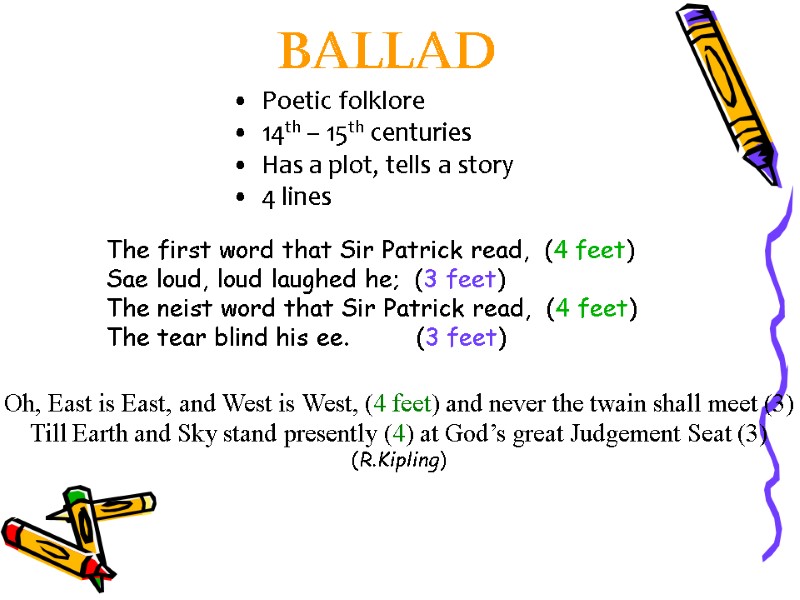
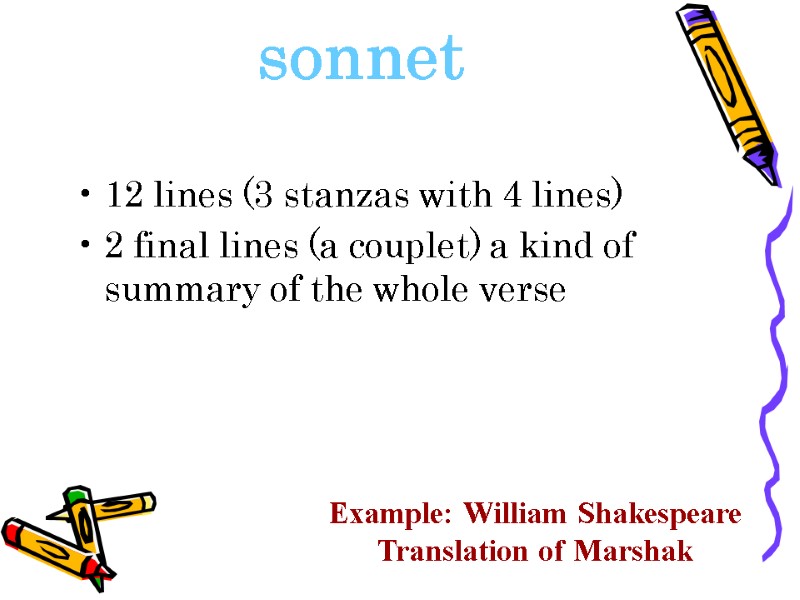
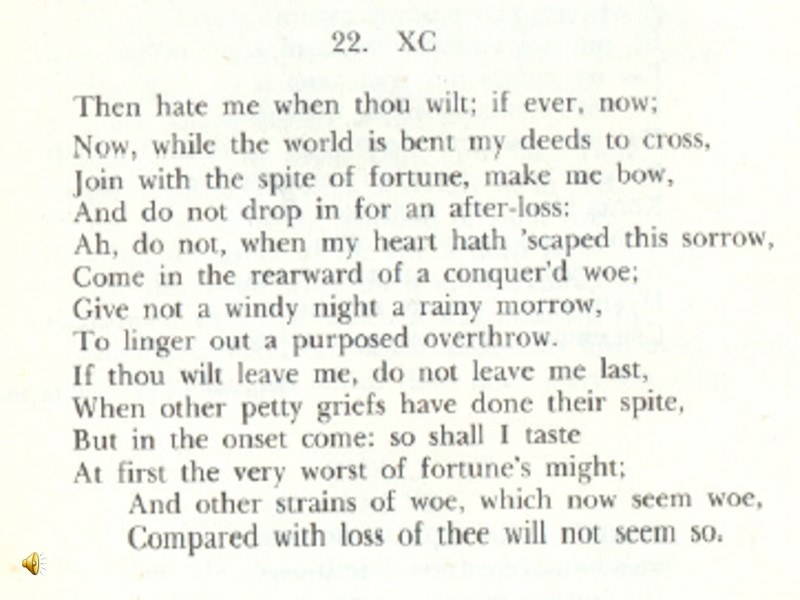
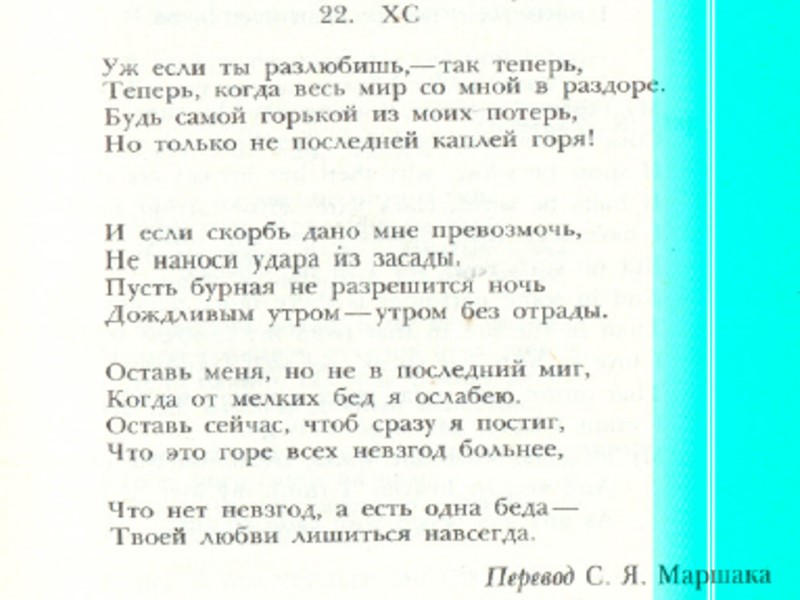
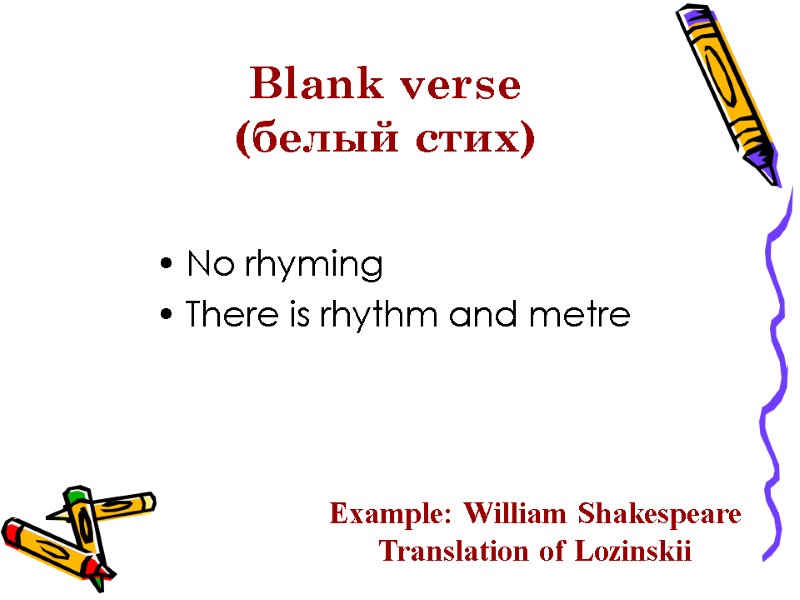
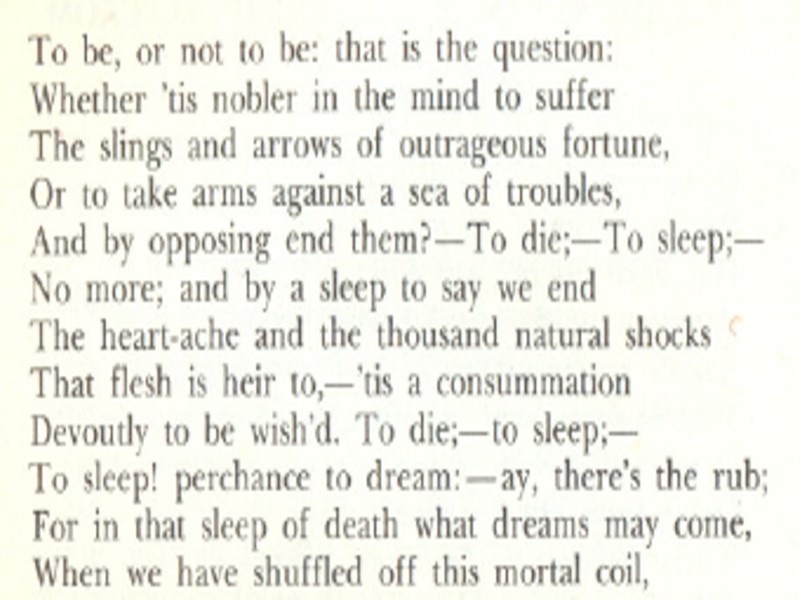
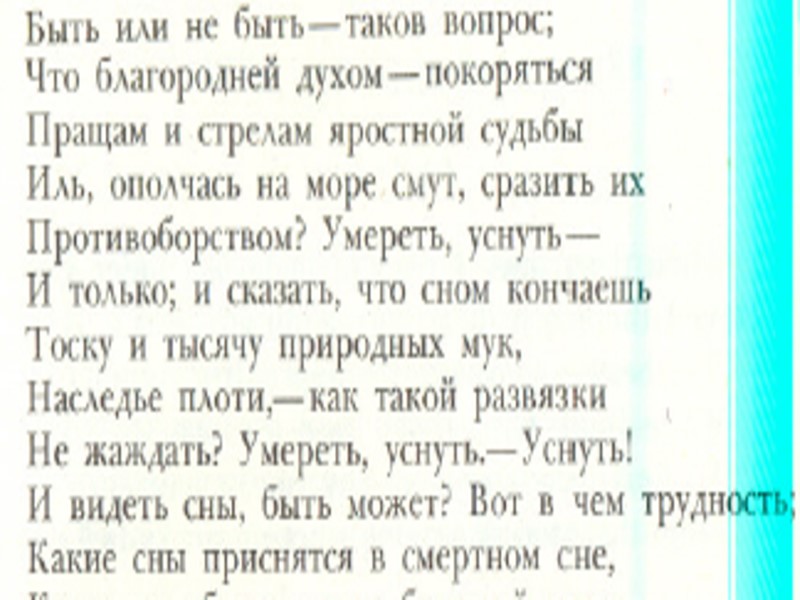

394-rhythm_and_rhyme.ppt
- Количество слайдов: 35
 The use of rhythm and rhyme
The use of rhythm and rhyme
 Rhythm in poetic speech is produced by regular alternation (чередование) of stressed and unstressed syllables Why do you cry, Willie? Why do you cry? Why, Willie, why, Willie, Why, Willie, Why?
Rhythm in poetic speech is produced by regular alternation (чередование) of stressed and unstressed syllables Why do you cry, Willie? Why do you cry? Why, Willie, why, Willie, Why, Willie, Why?
 Systems of versification A purely syllabic (силлабическая) A purely tonic (тоническая) The syllabic-tonic (силлабо-тоническая) French poetry Anglo-Saxon poetry Modern English and Russian poetry The same number of syllables in different lines The number of stressed syllables is important The same number of stressed and unstressed syllables
Systems of versification A purely syllabic (силлабическая) A purely tonic (тоническая) The syllabic-tonic (силлабо-тоническая) French poetry Anglo-Saxon poetry Modern English and Russian poetry The same number of syllables in different lines The number of stressed syllables is important The same number of stressed and unstressed syllables
 Why do you cry? Foot 5 types of feet Trochee (хорей) Iambus (ямб) Dactyl (дактиль) Amphibrach (амфибрахий) Anapaest (анапест)
Why do you cry? Foot 5 types of feet Trochee (хорей) Iambus (ямб) Dactyl (дактиль) Amphibrach (амфибрахий) Anapaest (анапест)
 Trochee (хорей) Two syllables: the first is stressed and the second unstressed Peter, Peter, pumpkin-eater, Had a wife and couldn’t keep her
Trochee (хорей) Two syllables: the first is stressed and the second unstressed Peter, Peter, pumpkin-eater, Had a wife and couldn’t keep her
 Iambus (ямб) Two syllables: the first is unstressed and the second stressed And then my love and I shall pace, My jet black hair in pearly braids.
Iambus (ямб) Two syllables: the first is unstressed and the second stressed And then my love and I shall pace, My jet black hair in pearly braids.
 Dactyl (дактиль) Three syllables: The first is stressed, the other two unstressed Why do you cry, Willie?
Dactyl (дактиль) Three syllables: The first is stressed, the other two unstressed Why do you cry, Willie?
 Amphibrach (амфибрахий) Three syllables: Stress on the second syllable A diller, a dollar, a ten o’clock scholar …
Amphibrach (амфибрахий) Three syllables: Stress on the second syllable A diller, a dollar, a ten o’clock scholar …
 Anapaest (анапест) Three syllables: Stress on the third syllable Said the flee, ‘Let us fly’, Said the fly, ‘Let us flee’, So they flew through a flaw in the flue
Anapaest (анапест) Three syllables: Stress on the third syllable Said the flee, ‘Let us fly’, Said the fly, ‘Let us flee’, So they flew through a flaw in the flue
 Distinguish the type of feet My heart leaps up when I behold A rainbow in the sky: So was it when my life began; So is it now I am a man: So be it when I shall grow old, Or let me die! (W. Wordsworth) iambus
Distinguish the type of feet My heart leaps up when I behold A rainbow in the sky: So was it when my life began; So is it now I am a man: So be it when I shall grow old, Or let me die! (W. Wordsworth) iambus
 Type of foot + Number of feet in the line Metre of the verse iambic trimetre (трехстопный ямб) iambic tetrametre (четырехстопный ямб) iambic pentametre (пятистопный ямб) Trochaic trimetre Trochaic tetrametre Amphibrachic tetrametre
Type of foot + Number of feet in the line Metre of the verse iambic trimetre (трехстопный ямб) iambic tetrametre (четырехстопный ямб) iambic pentametre (пятистопный ямб) Trochaic trimetre Trochaic tetrametre Amphibrachic tetrametre
 Iambic trimetre (трехстопный ямб) Who sets an apple tree May live to see its end Who sets a pear tree May set it for a friend iambic tetrametre (четырехстопный ямб) And then my love and I shall pace, My jet black hair in pearly braids. iambic pentametre (пятистопный ямб) Her lovely looks a sprightly mind disclose Quick as her eyes and as unfixed as those
Iambic trimetre (трехстопный ямб) Who sets an apple tree May live to see its end Who sets a pear tree May set it for a friend iambic tetrametre (четырехстопный ямб) And then my love and I shall pace, My jet black hair in pearly braids. iambic pentametre (пятистопный ямб) Her lovely looks a sprightly mind disclose Quick as her eyes and as unfixed as those
 Trochaic trimetre (трехстопный хорей) Ring – a – ring of roses, Pocket full of posies Trochaic tetrametre (четырехстопный хорей) Peter, Peter, pumpkin-eater, Had a wife and couldn’t keep her
Trochaic trimetre (трехстопный хорей) Ring – a – ring of roses, Pocket full of posies Trochaic tetrametre (четырехстопный хорей) Peter, Peter, pumpkin-eater, Had a wife and couldn’t keep her
 Amphibrachic tetrametre (четырехстопный амфибрахий) A diller, a dollar, a ten o’clock scholar …
Amphibrachic tetrametre (четырехстопный амфибрахий) A diller, a dollar, a ten o’clock scholar …
 Praised be the Art whose subtle power could stay Yon could, and fix it in that glorious shape; Nor would permit the thin smoke to escape, Nor those bright sunbeams to forsake the day. Caesura (цезура) Pause in the middle of the line
Praised be the Art whose subtle power could stay Yon could, and fix it in that glorious shape; Nor would permit the thin smoke to escape, Nor those bright sunbeams to forsake the day. Caesura (цезура) Pause in the middle of the line
 Irregularities in the metre Combination of 1 or 2 syllable feet Pease porridge hot Pease porridge cold, Pease porridge in the pot Nine days old
Irregularities in the metre Combination of 1 or 2 syllable feet Pease porridge hot Pease porridge cold, Pease porridge in the pot Nine days old
 Irregularities in the metre Combination of 1 , 2 or 3 syllable feet Humpty Dumpty sat on the wall Humpty Dumpty had a great fall All the King’s horses and all the King’s men Couldn’t put Humpty Dumpty together again
Irregularities in the metre Combination of 1 , 2 or 3 syllable feet Humpty Dumpty sat on the wall Humpty Dumpty had a great fall All the King’s horses and all the King’s men Couldn’t put Humpty Dumpty together again
 Irregularities in the metre Pyrric foot (пирхихий) The rhythm is broken due to the use of unstressed words in the place of the expected stressed syllables, or vice versa Can death be sleep, when life is but a dream Her lovely looks a sprightly mind disclose Quick as her eyes and as unfixed as those (J. Keats) (A. Poe)
Irregularities in the metre Pyrric foot (пирхихий) The rhythm is broken due to the use of unstressed words in the place of the expected stressed syllables, or vice versa Can death be sleep, when life is but a dream Her lovely looks a sprightly mind disclose Quick as her eyes and as unfixed as those (J. Keats) (A. Poe)
 Rhyme is created by repetition of the same sounds in the last stressed syllable of two (or more) lines in a stanza (строфа) Male rhyme Female rhyme Stress on the last syllable in the rhymed lines Stress on the last word but one syllable
Rhyme is created by repetition of the same sounds in the last stressed syllable of two (or more) lines in a stanza (строфа) Male rhyme Female rhyme Stress on the last syllable in the rhymed lines Stress on the last word but one syllable
 When the lamp is shattered (female) The light in the dust lies dead; (male) When the cloud is scattered, (female) The rainbow’s glory is shed (male) (P.B. Shelly)
When the lamp is shattered (female) The light in the dust lies dead; (male) When the cloud is scattered, (female) The rainbow’s glory is shed (male) (P.B. Shelly)
 Paired rhymes (aabb) The seed ye sow, another reaps; (a) The wealth ye find, another keeps; (a) The robes ye weave, another wears; (b) The arms ye forge, another bears. (b) (Shelly)
Paired rhymes (aabb) The seed ye sow, another reaps; (a) The wealth ye find, another keeps; (a) The robes ye weave, another wears; (b) The arms ye forge, another bears. (b) (Shelly)
 Alternate rhymes (перекрестные рифмы) (abab) A slumber did my spirit seal; (a) I had no human fears: (b) She seemed a thing that could not feel (a) The touch of earthly years. (b) (W. Wordsworth)
Alternate rhymes (перекрестные рифмы) (abab) A slumber did my spirit seal; (a) I had no human fears: (b) She seemed a thing that could not feel (a) The touch of earthly years. (b) (W. Wordsworth)
 Enclosing rhymes (опоясанные рифмы) (abba) or (ababcccb) Much have I travell’d in the realms of gold, (a) And many goodly states and kingdoms seen; (b) Round many western islands have I been (b) Which bards in fealty to Apollo hold. (a) (J. Keats)
Enclosing rhymes (опоясанные рифмы) (abba) or (ababcccb) Much have I travell’d in the realms of gold, (a) And many goodly states and kingdoms seen; (b) Round many western islands have I been (b) Which bards in fealty to Apollo hold. (a) (J. Keats)
 Rough wind, that moanest loud (a) Grief too sad for song; (b) Wild wind, when sullen cloud (a) Knells all the night long; (b) Sad storm, whose tears are vain, (c) Bare woods, whose branches stain (c) Deep caves and dreary main, - (c) Wail for the world’s wrong! (b)
Rough wind, that moanest loud (a) Grief too sad for song; (b) Wild wind, when sullen cloud (a) Knells all the night long; (b) Sad storm, whose tears are vain, (c) Bare woods, whose branches stain (c) Deep caves and dreary main, - (c) Wail for the world’s wrong! (b)
 Eye-rhyme, when the elements rhymed are similar only in spelling, NOT in pronunciation Who hath not seen thee oft amid thy store? Sometimes whoever seeks abroad may find Thee sitting careless on a granary floor, Thy hair soft-lifted by the winnowing wind. (J. Keats)
Eye-rhyme, when the elements rhymed are similar only in spelling, NOT in pronunciation Who hath not seen thee oft amid thy store? Sometimes whoever seeks abroad may find Thee sitting careless on a granary floor, Thy hair soft-lifted by the winnowing wind. (J. Keats)
 My heart leaps up when I behold A rainbow in the sky: So was it when my life began; So is it now I am a man: So be it when I shall grow old, Or let me die! (W. Wordsworth) (a) (a) (b) (b) (c) (c) Enclosing rhyme male
My heart leaps up when I behold A rainbow in the sky: So was it when my life began; So is it now I am a man: So be it when I shall grow old, Or let me die! (W. Wordsworth) (a) (a) (b) (b) (c) (c) Enclosing rhyme male
 Type of stanza (строфы) A quatrain (четверостишье) A couplet (двустишье) A ballad A sonnet A blank verse
Type of stanza (строфы) A quatrain (четверостишье) A couplet (двустишье) A ballad A sonnet A blank verse
 ballad Poetic folklore 14th – 15th centuries Has a plot, tells a story 4 lines The first word that Sir Patrick read, (4 feet) Sae loud, loud laughed he; (3 feet) The neist word that Sir Patrick read, (4 feet) The tear blind his ee. (3 feet) Oh, East is East, and West is West, (4 feet) and never the twain shall meet (3) Till Earth and Sky stand presently (4) at God’s great Judgement Seat (3) (R.Kipling)
ballad Poetic folklore 14th – 15th centuries Has a plot, tells a story 4 lines The first word that Sir Patrick read, (4 feet) Sae loud, loud laughed he; (3 feet) The neist word that Sir Patrick read, (4 feet) The tear blind his ee. (3 feet) Oh, East is East, and West is West, (4 feet) and never the twain shall meet (3) Till Earth and Sky stand presently (4) at God’s great Judgement Seat (3) (R.Kipling)
 sonnet 12 lines (3 stanzas with 4 lines) 2 final lines (a couplet) a kind of summary of the whole verse Example: William Shakespeare Translation of Marshak
sonnet 12 lines (3 stanzas with 4 lines) 2 final lines (a couplet) a kind of summary of the whole verse Example: William Shakespeare Translation of Marshak


 Blank verse (белый стих) No rhyming There is rhythm and metre Example: William Shakespeare Translation of Lozinskii
Blank verse (белый стих) No rhyming There is rhythm and metre Example: William Shakespeare Translation of Lozinskii




